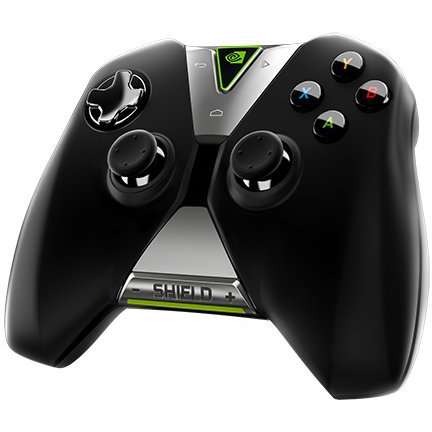Nvidia Shield Tablet And Shield Controller Review
The Shield Tablet, powered by Nvidia’s Tegra K1 SoC, deftly handles browsing and media playback duties. Combining it with the wireless Shield Controller transforms the 8-inch device into an exciting mobile gaming platform.
Results: GPGPU Benchmarks
Correction: This article was updated at 10:00 pm ET to include results based on a new firmware v1.2.1 from Nvidia (released OTA on 10/9/14) that fixed the driver bug causing erroneous results for CompuBenchRS. This page should replace the original page in the posted article.
CompuBenchRS
CompuBenchRS tests the compute performance of multi-core systems supporting the RenderScript API (a component of the Android operating system). The compute API is similar to CUDA or OpenCL, and can distribute parallel tasks across all compute cores, including the CPU and GPU (as of Android 4.2, RenderScript is expanded to run on the GPU, in addition to the CPU of supported systems). On compute-capable GPUs, the benchmark runs on the graphics engine. Otherwise, the tests stress CPU cores. CompuBenchRS sub-tests cover the following categories: Computer Vision (Face Detection), 3D Graphics (Provence - ray tracing), Image Processing (Gaussian Blur, Histogram), Physics (Particle Simulation – 4K), and Throughput (Julia Set, Ambient Occlusion).
The Shield Tablet outscores the Snapdragon 805 MDP tablet from Qualcomm, but curiously falls behind the other two, lower clocked, -A15 based SoCs. Even Nvidia’s previous generation Tegra 4 SoC in the EVGA Tegra Note 7 posts a higher score. We brought this to Nvidia’s attention and its engineers are looking into this issue.
The Shield Tablet performs better in the Graphics test, scoring nearly 1.4x higher than its closest rival.
Here we see the Tegra K1 flex its 192 CUDA cores, offering between 2x-3x the performance of the Snapdragon 805 in second place.
Once again Tegra 4 posts a better score than Tegra K1. Nvidia’s engineers are investigating and it’s likely this is a software issue.
Based on these results, Tegra K1 must be “a neural net processor; a learning computer” sent back through time to destroy all of the other SoCs that could lead a rebellion in the post-apocalyptic future.
Get Tom's Hardware's best news and in-depth reviews, straight to your inbox.
After the firmware update from Nvidia to address the CompuBenchRS bug, overall RenderScript performance is mixed. The Tegra K1 in the Shield Tablet still posts the best scores in the Graphics, Image Processing, and Throughput tests, but the margin of victory, while still impressive, is substantially less. In the Face Detection and Physics tests, the Shield Tablet falls behind the Tegra Note 7. Tegra K1 outmatches the Tegra 4 in every conceivable way, so it’s safe to blame software for this anomaly. Nvidia’s engineers are looking into this issue, so hopefully we’ll have a more definite answer, and maybe a software update, in the near future.
Current page: Results: GPGPU Benchmarks
Prev Page Results: GPU Core Benchmarks Next Page Results: Display Measurements-
blubbey Those GPGPU benchmarks are ridiculous in comparison. It looks like a great bit of kit from what I've seen so far. A die shrunk Maxwell should be fantastic. Maybe even a lower clocked version just for power consumption? It'll still perform as well, if not better than the K1 at 750MHz (assuming 2 SMMs) I'd assume.Reply -
Memnarchon "Based on these results, Tegra K1 must be “a neural net processor; a learning computer” sent back through time to destroy all of the other SoCs that could lead a rebellion in the post-apocalyptic future."Reply
Lol this is epic! xD
Anyway, great and unique review. Especially for the so many GPGPU benchmarks.
Nvidia tablet at $299 seems to be a great buy. -
aberkae If maxwell brings double the performance per watt on the same node the next tegra chip on 20 nm node should be a home run for the companyReply -
deftonian Impressive, but I feel it's still missing that "umph" to get me to buy this and carry it around as an added device, next to my phone (Note 3). Maybe I just don't game enough on the android market or steam. Either way, I think it is impressive for a mobile gaming device and all the things it offers. I think they've started a great line and hope it grows into a successful tablet/gaming brand.Reply -
aberkae If maxwell brings double the performance per watt on the same node the next tegra chip on 20 nm node should be a home run for the companyReply -
gio2vanni86 The streaming a game while i'm at my friends house using my PC at home is what has me very interested. Plug into his TV and play amazing games he can only dream of. I'm in.Reply -
vithrell Just wait for Intel's Core M. It wont match the price (CPU alone will cost $300), but in fanless tablet form factor it wont have worthy competitor. Early GPU benchmarks give Core M 55k graphics score in Ice Storm, so more than 1.5x more power than Tegra K1. AND you can run full Windows on it. I wish Nvidia took x86 path with its cpu cores.Reply







